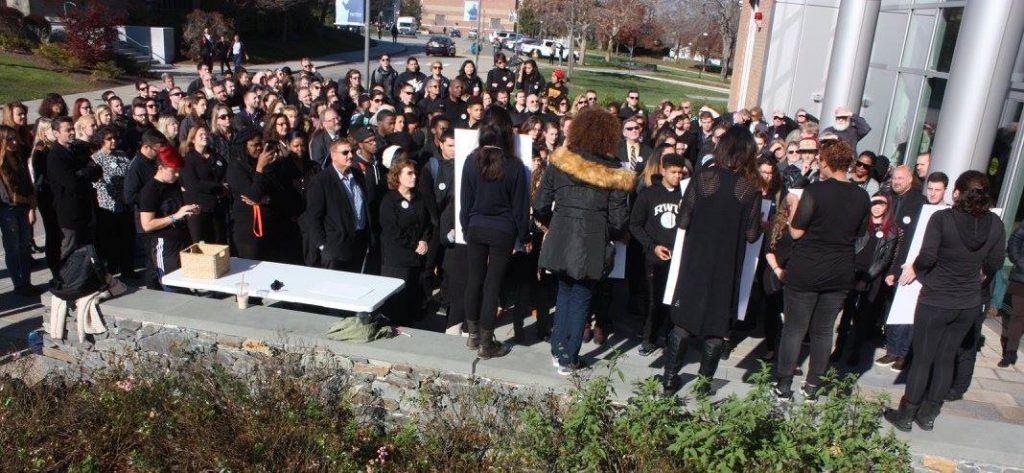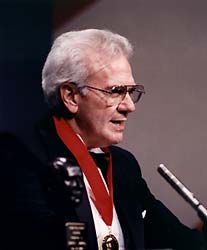How should college campuses respond to the emerging political agenda of President Trump and his supporters? What role should college presidents play in orchestrating these responses?
Almost all college campuses reflect the breadth of political opinion of the country as a whole, although not in the same proportion. It is fair to say that most college campuses are more liberal than their surrounding communities, but campuses are far from politically homogeneous. For that reason, presidents have to be careful in how they present their personal political views. To be sure, just as for the average citizen, presidents enjoy the right and privilege, under our Constitution, to speak their minds on any subject they wish. But with that freedom comes the responsibility (and the reality) to recognize that, however much they may wish to be speaking only for themselves, they nevertheless do so with the title “President” in front of their names, and their comments are therefore linked to the name of their campus.
At the same time, the present moment presents a wonderful opportunity for presidents both to encourage the discussion of vitally important issues with their students, and to do so in a manner that reflects the civility of discourse we both honor and endeavor to instill in our students while they are part of our campus communities.
Consider two recent events, and how presidents responded:
1) President Trump’s executive order that suspended the immigration of refugees from seven Muslim-majority nations, followed by the revocation of tens of thousands of visas, is currently (and not surprisingly) under challenge in federal courts in various parts of the country. At the moment, an appellate court has declined to reverse the temporary injunction placed on the executive order by a federal judge, and the terms of the executive order have themselves, for the time being, been suspended.
Reaction to the executive order by college presidents was immediate. Many of these responses were focused on reassuring the students and faculty who were the target of the executive order that they would be supported and protected by the campus to the best of the campus’s ability.
But quite a few presidential comments were directed at the executive order itself, and, by extension, at President Trump, who, of course, promulgated the order. Some presidents used particularly strong language: Brian Rosenberg, president of Macalester College in Minnesota, called the executive order “cowardly and cruel,” and he urged other college presidents to speak with “particular force” as they responded (Inside Higher Ed, Feb. 1, 2017).
In the interest of full disclosure, my response was in the first category: a statement of reassurance to the RWU campus that our commitment to religious freedom — the hallmark of our namesake, Roger Williams — would be unflagging. I deliberately chose not to characterize the executive order itself, for reasons I will explain momentarily.
2) Milo Yiannopoulos, an editor at Breitbart, the alt-right news network, has been engaged in a campus speaking tour. His remarks are so provocative that many of his appearances have been:
a. picketed (University of Minnesota, Feb. 17, 2016)
b. interrupted (DePaul University, May 24, 2016
c. prematurely ended (UCLA, May 31, 2016, because of a bomb threat
d. a cause of violence (University of Washington, Jan. 20, 2017, when a protester was shot by a Yiannopoulos supporter)
e. canceled (University of California, Berkeley, Feb. 1, 2017)
The cancellation at Berkeley is receiving national attention, in large measure because of the irony: Berkeley was the home of the free speech movement (1964) and is famously accepting of controversial speakers. Nicholas Dirks, the Berkeley chancellor, explained his decision to cancel the Yiannopoulos speech in a letter to The New York Times (Feb. 4, 2017), saying that he did so “reluctantly” and “only after determining that both the speaker’s and the public’s safety was highly endangered.” The problem, he said, was not with the estimated 1,500 peaceful protesters but with “more than 100 armed people in masks and dark uniforms who used paramilitary tactics” and “we could not plan for the unexpected.”
The impact of the cancellation at Berkeley continues to echo. Mr. Yiannopoulos, the Heritage Foundation and even President Trump promptly issued news releases or tweets condemning the cancellation — and President Trump threatened to end all federal funding at Berkeley (“U.C. Berkeley does not allow free speech and practices violence on innocent people with a different point of view – NO FEDERAL FUNDS?”)
How should college presidents respond to speakers whose intent is to disrupt and provoke — especially when cancellation brings threats of governmental intervention?
I see the executive order on refugees and the canceled speech at Berkeley as events that, if managed well by college presidents, could be consequential in rebuilding community, both on campuses and nationally. But it won’t be easy.
Most college presidents see themselves as stewards of a sacred trust: upholding the traditional values of higher education, which include protecting every individual on campus from discrimination and arbitrary abrogation of rights and privileges. Understandably, threats to abridge rights, even from the nation’s president, in the absence of a clear and present showing of need, may be met with reactions ranging from skepticism to studied opposition to outright rejection. But we have to ask ourselves, emotions aside, what should college presidents be doing? Is there a best response?
Similarly, if faced with the possibilities of violence, how far should college presidents go in permitting highly controversial speakers from coming to their campus? Conversely, how far should they go in limiting the free expression of opinion, regardless of how objectionable it might be to some, a right enshrined in the First Amendment to the Constitution?
Finally, in responding to these issues, how do college presidents balance their personal feelings with the need to be seen as modeling best practices for their students?
I submit that this is a time for some people in this country to be moderate in their responses, and to endeavor to create bridges across the widening chasm between liberals and conservatives, Democrats and Republicans — and if college presidents cannot, or are unwilling, to play this role, I despair for the future of our country.
I see no advantage for college presidents to respond to initiatives such as President Trump’s executive order regarding refugees with language that has the result of raising the temperature around the issue at hand. Words like “cruel” and “cowardly” are not said with an eye toward promoting a civil conversation — and someone has to commit to civility if we are to avoid even greater polarization in our nation.
Surely, it was apparent to everyone that the issuance of President Trump’s executive order would be met with a series of challenges in our nation’s courts: the balance of powers among the legislative, administrative and judicial arms of government exists for precisely this purpose. Statements of concern, a recommitment to core values, expressions of support for those imperiled, all strike me as expected and appropriate. Creating forums on campuses for a discussion of the need (1) to determine if the current level of protection of our citizens from terrorist attacks is sufficient, and, if not (2) to recommend additional steps that might be considered, weighing the balance between the degree to which safety would be enhanced versus the degree to which particular actions might actually increase the level of danger — even if the conversation is happening, as in this case, only after the administration has taken action — would be a way of modeling best practices for our students, and allowing them to see the democratic process in action.
Conversely, there is a real danger should presidents, as leaders of their campuses, speak out in judgmental terms about the wisdom of an administrative action, because they will be seen as effectively endeavoring to end the debate before it begins, and, rather than creating the opportunity for students individually to listen to two sides of a matter and come to their own individual conclusions, be seen as deciding for the students and presenting the answer as a forgone conclusion.
College presidents must be seen as leading a discussion, not overseeing an indoctrination.
We should remember that, in the days following the issuance of the executive order, a slight plurality of the American public approved of the president’s action, even though a majority of campus presidents who took a position on the matter opposed President Trump’s executive order. Unilateral declarations by college presidents do very little to prompt a debate, let alone to change the minds of those on the other side of the matter.
Interestingly, at a national meeting of academics in January, a much-discussed topic was the question of how higher education should act to rebuild the public’s trust in the work of our sector (Inside Higher Ed, Jan. 27, 2017). One way to start might be to recognize that most of America has not ceded to academics the right to decide unilaterally on the wisdom or folly of particular political actions — and we should stop acting as if they have.
Moreover, the movement away from civil conversation has strengthened the hands of those who oppose the very notion of civility (The New York Times, p. 1, Feb. 3, 2017). The deliberately provocative words of alt-right spokesmen such as Milo Yiannopoulos and Richard Spencer are countered by the so-called “black bloc group” — the anarchists and anti-fascists who violently disrupted the scheduled Yiannopoulos speech at Berkeley. (This group has been active in the Bay Area for some time, and one wonders why the Berkeley chancellor was surprised by their appearance — “we could not plan for the unexpected.”) The alt-right movement provokes violent dissent, the black bloc anarchists are only too happy to provide violent dissent, the alt-right then claims that government intervention is required to protect free speech, the anarchists celebrate the breakdown of civil order, and universities become the unwitting foils in an attack on democratic principles.
If college campuses are being targeted as the battleground between extremists on the left and right, then college presidents have to find ways to reclaim the middle ground. This starts with conversations between the campus administration and campus political groups, to encourage the creation of forums for debate between representative voices from left and right. A true debate, where students are invited to witness a meaningful presentation of opposing views, is far more interesting (and useful) than one-sided diatribes where demagogues are deliberately being provocative, and encouraging demonstrations rather than attentive listening.
And to circle back to my primary thesis: It all begins with the college presidents deciding to use controversial issues as learning moments for their students — and not soapboxes from which they can proclaim their personal opinions.


